October 8, 2015
Social responsibility and art in public places, gardens and walking trails
Written by Kate Corder
In this article I will examine notions and experiences of social responsibility in my own art practice, situated on sites including public places, gardens and walking trails. In the examples I will show how forms of social responsibility, although not a prerequisite to the artwork, can be constructed directly or indirectly through art’s public interactions; by highlighting, hinting or pointing at ideas pertaining to social responsibility, perhaps where none seemed to exist before the artwork’s construction. Social responsibility in art is perhaps paradoxical, because it is not necessarily perceived and can be subjective to the viewer.
My practice has incorporated plant installations in city centers and institutional gardens, which may or may not be conceived as art by the public. The work can act as an almost invisible presence or influence on public space. I will present four examples of this. The first example is a herb garden at the University of Reading, constructed in 2005-6. The second example is a vegetable gardens at the East International exhibition in Norwich, 2009. The third example is a vegetable garden plot in the Museum of the English Rural Life garden (2009-12) and the fourth example is my Heathrow Orchard Walks series (2014-15).
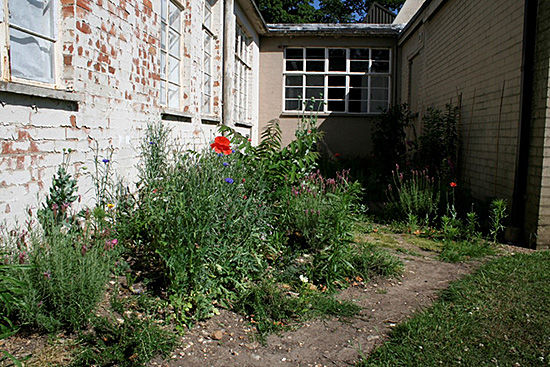
Herb Garden
My first example is Herb Garden, constructed outside the Art Department studios at the University of Reading, while I was studying for my MFA (2006). I gained permission from the University Estate Management to use the space, which was neglected and sometimes vandalized. Over nine months I gradually transformed the site by planting it with propagated seedlings, plant cuttings and roots. The site sits close to pathways, which are intermittently used by local residents and those associated with the University. The Herb Garden cultivation seemed to stem the site’s vandalism and give the site a new social purpose through plant growth activity. It was not a necessary factor that the Herb Garden should be recognized as an artwork by the general public, but it was framed as an artwork within the art institution and MFA exhibition. During the exhibition the garden could be viewed via a black and white CCTV monitor in the exhibition space (the CCTV camera positioned outside overlooking the Garden) and seen through restricted window access (paper covered a proportion of the windows). The observation points referenced Japanese Gardens viewed through windows as if they were paintings.[1] The view of the garden from outside the studio was unrestricted but framed by three walls forming the studio buildings. The garden has since acted as a legacy. It is sometimes reworked or adapted by students, but also left to grow untended and structured by its organic nature.
EAST
For EAST International 2009 I was selected to exhibit a series of films I made on Tolhurst Stockfree Organic vegetable growing business.[2] Iain Tolhurst is a renowned veganic grower, who grows vegetables and fruit for a weekly vegetable and fruit bags scheme delivering to Reading and Oxford.
[3] Tolhurst is a pioneer in stockfree method of growing vegetables, which means he does not use animal by-products, (blood, bone and manure) to fertilize the soil. Instead, he uses plants and compost to increase the fertility and health of the soil and relies on biodiversity, wildlife, companion planting and netting, as agents to manage predators or pest control of the crops.
[4] My Tolhurst film series followed a year (2007-8) in the businesses growing cycle. I made monthly visits to the 19-acre site near Whitchurch-on-Thames, filming the crops in the two fields and two-acre garden. The films focus on plants and biodiversity, signifying the hidden intensive human labour of the vegetable growing business, where much of the work is done by hand rather than by machines.
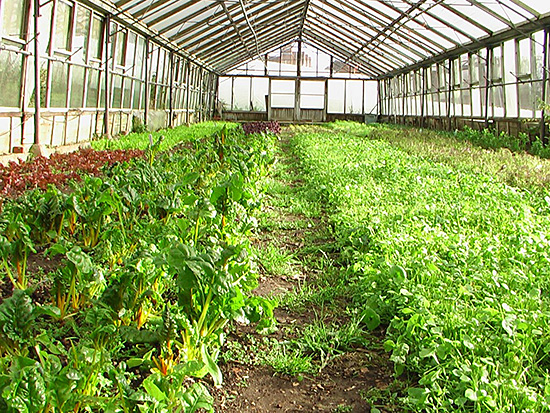
With the EAST curators it was agreed I would also construct a vegetable-planting project reflecting on the Tolhurst films, as part of my contribution to EAST International. I negotiated with Norwich City Council to gain access to planting vegetables in public places across Norwich. I wanted to install vegetables in pre-existing planters at the railway station and on pavements across the city and on road roundabouts so that vegetable became significant and integrated in to Norwich city human highways. The locations I was interested in using were places Norwich City Council used for decorative planting, and the premise of the project would highlight and contribute to the grow your own vegetable movement.
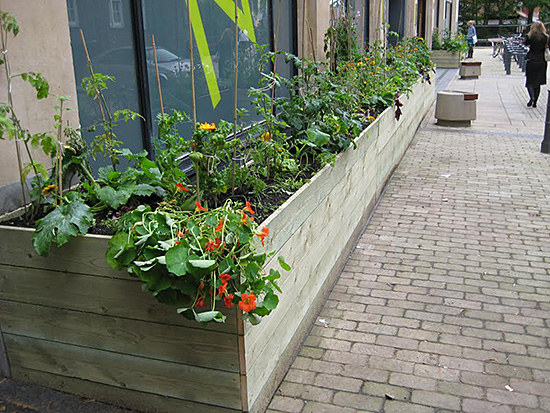
The City Council announced they would organize a group of students to grow vegetables on my behalf and plant the vegetables with companion planting as decorative displays in three specific locations. These were not the original locations I suggested, but prominent as focal points within the town. The three locations were, outside a McDonalds adjacent to a shopping centre, in the gardens of The Assembly House, which is a public arts venue and on the balcony of the civic City Hall. It was stated vegetable produce at the Assembly House and City Hall would be used in the restaurants of the buildings. I am however uncertain if this took place. Seeds for the project were provided as sponsorship from a seed company. I met with the students and publicity photographs were taken for local media and the Norwich City Council news publication. Unfortunately, later on Norwich City Council decided they would not plant out vegetables at the McDonalds location, citing insect damage of the plants as the reason.
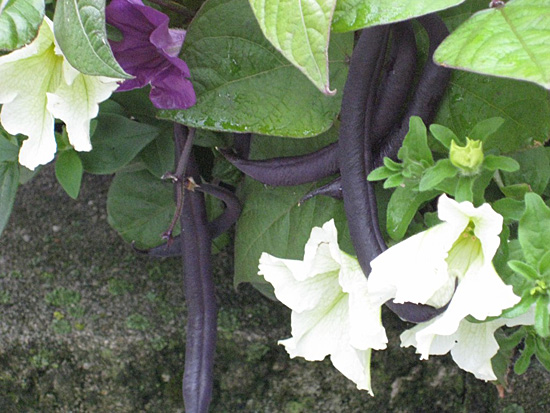
When the plants were installed at the Assembly House and City Hall I visited and found vegetables, beans and tomatoes, were included in the displays, but were hard to discern amongst the elaborate floral arrangements. As an artist creator I wondered if the artwork was visible, if this mattered in a sense of social responsibility or if there was an invisible public appreciating the plant installations?
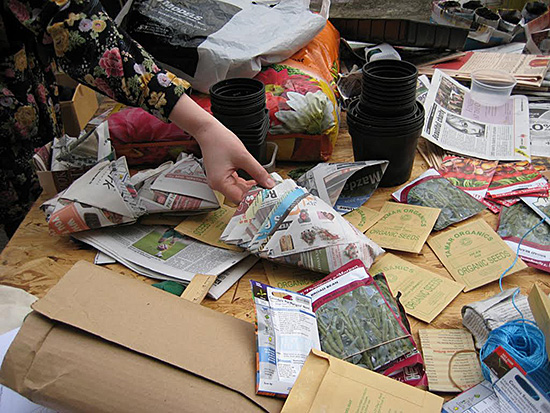
Concurrently, over several months, in the run up to the EAST exhibition, I worked with art students on a planting project. Planning permission was given for a plant installation in the street outside the EAST venue, extending the exhibition in to the public realm. The complete planting project was titled Vegetables in the City. The art students planted seeds in March and continued cultivating the plants until early July. I also grew plants where I live in Reading. When it came to install the EAST exhibition the plants were collected and delivered to the venue. Over approximately four days I installed the vegetable plants in purpose built planters in the street. During this activity I interacted with people as they passed by. Local residents seemed to appreciate the installation and some hoped it would be a permanent feature. Technically speaking any vegetable produce from the installation was available for use by the general public. Invigilators of EAST tended the plants as part of their activity over the six weeks of the exhibition. After the exhibition the plant installation was removed and I was told someone made Kate Corder Green Tomato Chutney, which suggested forms of social responsibility through utilitarian processes, also all the soil and wood used to construct the installation were reused in local gardens.
Since the EAST planting projects, in retrospect, I continue to think planting of vegetables by local councils in city or town centers is an interesting proposition whether the plantings are framed as art projects or not. Fruit and vegetable projects should be a necessity in contemporary life in both organized and unorganized town planning. The privatization of land in towns and cities, even when seemingly publically owned, often restricts this action and this is unfortunate, because “free” fruit and vegetables are a bonus source of vital nutrition to communities.
Allotment Plots
During 2009-2012, I used a small allotment plot garden (approximately 2.7x4.7m), for a research practice study area for my PhD in Art Practice. The allotment plot was situated in the garden of MERL, the Museum of English Rural Life (owned by University of Reading). The study was a durational commitment to plant cultivation and reflected on allotment plot social history.[5] Allotment gardens are a social construct, the history of which in England stems from 1790. At that time, various factors including land enclosures, evictions, the industrial Revolution, wars and poverty contributed to the need for land allocations for the poor and unemployed to grow food. The Allotment Movement was gradual to germinate, but then rapidly accelerated from the 1830s after the Swing Riots. A series of laws were passed giving allotment holders rights to land for nutritional plant cultivation.[6]
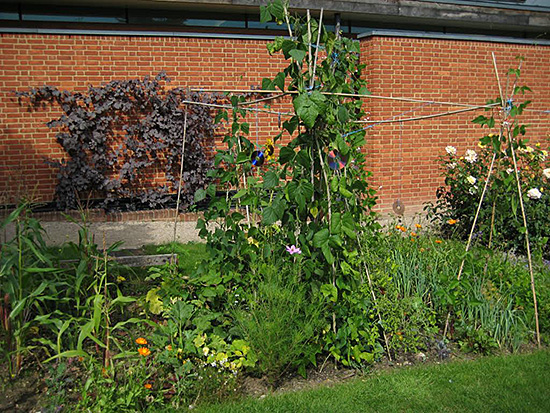
MERL and its archival contents were a constant influence on my allotment plot work; something to reflect on and dig through, because of the social implications, agriculture and horticultural subjects. Books contained within MERL’s ReadingLibrary include information on how to exterminate unwanted plant pests through the use of toxic chemicals, situated next to books on how to grow plants and increase biodiversity or books on claiming back the land.
Cultivation of the plot in MERL's garden had a performative aspect to it, which was sometimes framed within the institution through announcements, but also continued on particular days on a weekly basis. Processes of cultivation were sometimes unpredictable, evolving, as were the visual aspects of the Plot. Crop failure became written in to the study, because plants were consumed by wildlife in the garden and drought often dominated weather patterns. The Allotment Plot was not necessarily seen as art by observers as it could be absorbed in to general museum activity, however the plot produced substantial productivity not just through vegetable production, but also film, photography and creative writing. Interactions with the Plot and its cultivation were recorded on a blog at www.ellamontt.wordpress.com producing a window to a virtual garden; a site, which can be found by anyone searching for allotment gardens on the Internet. A second allotment plot was added as a comparative study. This plot was at Bulmershe Allotments, a large site containing many plots, which has existed in the continuum of allotment social history since 1926. Through cultivating allotment plots forms of social responsibility can emerge, if one recognizes the allotment holders’ lawful rights to land for cultivation.
Heathrow Orchard Walks
Research can uncover hidden information and discover flaws glossed over, buried and blurred away from common knowledge.[7] In my current walk series, Heathrow Orchard Walks, which I started in 2014 and continue in 2015, I act as a tour guide exploring contested land around Heathrow Villages. The area when searched is punctuated with occasional fruit trees including cherry, plum, apple, pear and quince. The trees are residue from former fruit growing business that existed before the airport was constructed in the 1940s and motorways cut through surrounding land from the 1970s. Through the Walks I seek to unearth hidden land usage and histories of human cultivation, as an exposure process engaging with social responsibility. Often local residents seem unaware of certain features in the landscape, which perhaps go unnoticed.
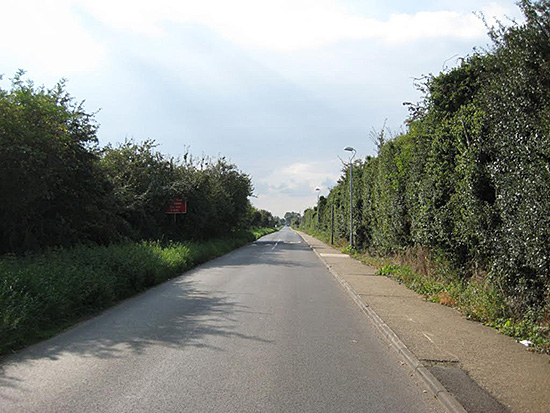
Farmland fields where grain crops are grown, still function close to the airport boundary, as do reservoirs of water. The flat area of the region was formed during glacial melt, which deposited deep layers of river silt on to even deeper layers of gravel on the riverbed. Over time, the silt turned in to fertile soil. The flat land before airport construction was used to grow vast quantities of fruit and vegetables helping to feed Londoners.[8] Now the gravel is excavated from the soil by aggregate companies and used in construction industries concreting over London. Land which has already had its gravel extracted is reconstructed in to park moorland creating new interventions in the landscape and incorporating habitats for plant and wildlife to thrive.
[9] In some areas landfill is hidden beneath the re-wilded moors and one area a former gravel pit is now a lake suitable for wild swimming and popular with the local community.
In 2014, two of the Heathrow Orchard Walks (April and September) were part of Kathrin Böhm's Haystack event program.[10] After the Haystack Heathrow Orchard Walk on April 27 2014, an article written by Kathrin Böhm, “Welcome to Heathrow – a strange landscape, not just an airport” was published in The Guardian’s “Comment is free” section (28 April 2014).[11]
The article described the landscape surrounding Heathrow, as revealing surprising contradictions of hyper-global-activity and seemingly tranquil spaces, which is a premise and purpose in the Heathrow Orchard Walks activity. Comments on the article by the Guardian readership, focused mainly on debating airport expansion. Some commentators, even though flippant, seemed to accept airport expansion and a Third Runway through not being able to envision alternatives. When debating issues to do with airport expansion, government perspectives and airline corporations shape societal perceptions by broadcasting fear of the UK loosing its international hold on commerce and major air flight activity in order to influence the Third Runway debate. Heathrow is, however unable to be a 24hour airport, because of noise levels in close proximity to urban populations. Pollution levels are also ignored in the debate, as is the loss of human and non-human habitats.
In the recent General Election (May, 2015) airport expansion was not included in political debate or party manifestos. The Davies Commission also reported on viable airport expansion options on July 1 this year, the result of which is further divided land.[12] The report, to the dismay of many, recommended airport expansion at Heathrow, and in doing so has aggravated and contributed to campaigns against airport expansion. Arguments against airport expansion include environmental pollution and noise pollution generated by airplanes, and general increases in traffic to and from the airport. Pollution generated by the airport and motorways is substantial and already passes guidelines and limits. What is social responsibility in this instance? The answer might depend on what one perceives as the socially responsible direction of how humans operate. Political notions of human protest are involved in Heathrow's land cultivation. Clashes between the two sides for and against airport expansion create political demonstrations, creating two opposing views on what Jacques Rancière might call the sensible.[13]
In art terms the Heathrow Orchard Walks allow experiences of the debate on airport expansion through walking and exploring the landscape. The Walks sometimes go near to the airport borders, where planes are landing or taking off. The planes fly overhead so one can experience at a safe distance everyday life close to the airport. When one is inside the embedded airport, one does not necessarily know what is outside the airport and everything is seen at a distance or not seen at all. When one participates in a Heathrow Orchard Walk, the general public can be unaware they have observed a live art event, even if they have been in conversation with the Walk participants, who might be documenting or gathering forms of information and experiences of the locality.
In conclusion the public does not always recognize art outside the studio gallery area as art, but situations can perpetuate social responsibility through the presence of the artwork. Situations can be created and practice staged to engage a knowing or unknowing public, who may or may not realize they have experienced art in operation. Art, which resists claiming itself as art through titles, can exist under the radar in public space and be consumed by communities as an invisible resource. Perceptions of what is social responsibility can be, varies depending on ones beliefs, knowledge and motives. Awareness of social responsibility in art can be a layered experience and a realization process for both the artist creating the artwork and the viewing public or those participating in the artwork activity.
Kate Corder was awarded a PhD in Art Practice at the University of Reading in 2014 for her thesis titled “The Allotment Plot: Place Tilled - An investigation into plant material, rural labour and cultivation within art practice”.
Recent exhibitions and conferences include Free- Time, DRAFT (2011), Parasol Unit, London; Wargrave Gardeners and Allotmenteers Club, (2011); Art and Landscape: interdisciplinary perspectives Symposium, (2010) MERL, UOR; Environmental Utterance Conference (2012), University College of Falmouth; Jacques Rancière and the Politics of Adisciplinarity, (2014), Binghamton University, NY and Of the Earth Conference, (2014) Plymouth University, Skulptur und Zeit im 20. und 21. Jahrhundert Conference, Universität der Künste Berlin (2015) and Re-imagining Rurality Conference, University of Westminster London (2015). Kate also started a series of Heathrow Orchard Walks in 2014. The Walks, continuing in 2015, explore contested land surrounding Heathrow Airport’s and the suggested “Third Runway”, as a former site of orchards and market gardens and current gravel farming.
[1] David A. Slawson, Secret Teachings in the Art of Japanese Gardens: Design Principals, Aesthetic Values (Toyko and New York Kodansha International Ltd, 1987).
[2] Stockfree Organic means Vegan Organic or Veganic.
[3] Iain Tolhurst, "Tolhurst Organic Produce," http://www.tolhurstorganic.co.uk/.200920 November
[4] Jenny Hall and Iain Tolhurst, Growing Green: Organic Techniques for a Sustainable Future (Chesire: The Vegan Organic Network, 2006).
[5] Jeremy Burchardt, "The Allotment Movement in England, 1793-1873" (University of Reading, 1997). Burchardt’s thesis sets out circumstantial necessity and political negotiations for the Allotment Movement.
[6] Ibid.
[7] Lucy R. Lippard, The Lure of the Local: Senses of Place in a Multicentered Society (New York: The New Press, 1997). Lippard’s Lure of the Local heavily influences aspects of this thinking.
[8] Philip Sherwood, Heathrow: 2000 Years of History: Second Edition, Second ed. (Stroud, UK: The History Press, 2012). See Sherwood’s chapter on agriculture.
[9] A large area of contaminated land was reconstructed by British Airways in to parkland and has been known as Harmondworth Moor since 2000.
[10] Kathrin Böhm and Kate Corder, "Haystacks 11: Heathrow Orchards with Kate Corder on Saturday 19 April," http://h-a-y-s-t-a-c-k-s.net/haystack-11_-heathrow-orchards-with-kate-corder-saturday-19-april/
[11] Kathrin Böhm, "Welcome to Heathrow - a Strange Landscape Not Just an Airport," in Comment is free (London: theguardian.com, 2014).
[12] Airports Commission, "Airports Commission: Final report and supporting documents", https://www.gov.uk/government/collections/airports-commission-final-report-and-supporting-documents#final-report , visited on October 1, 2015. The report to the dismay of many, recommended airport expansion at Heathrow, and in doing so has aggravated and contributed to campaigns against airport expansion.
Böhm, Kathrin, and Kate Corder. "Haystacks 11_Heathrow Orchards with Kate Corder on Sunday 27 April." http://h-a-y-s-t-a-c-k-s.net/haystack-11_-heathrow-orchards-with-kate-corder-saturday-19-april/.201427 April
Burchardt, Jeremy. "The Allotment Movement in England, 1793-1873." University of Reading, 1997.
Commission, Airports. "Airports Commission: Final Report." London: gov.uk, 2015.
Hall, Jenny , and Iain Tolhurst. Growing Green: Organic Techniques for a Sustainable Future. Chesire: The Vegan Organic Network, 2006.
Lippard, Lucy R. The Lure of the Local: Senses of Place in a Multicentered Society. New York: The New Press, 1997.
Rancière, Jacques. The Politics of Aesthetics: The Distribution of the Sensible. Translated by Gabriel Rockhill. London: Continuum, 2004.
Sherwood, Philip. Heathrow: 2000 Years of History: Second Edition. Second ed. Stroud, UK: The History Press, 2012.
Slawson, David A. Secret Teachings in the Art of Japanese Gardens: Design Principals, Aesthetic Values. Toyko and New York Kodansha International Ltd, 1987.
Tolhurst, Iain. "Tolhurst Organic Produce." http://www.tolhurstorganic.co.uk/.200920 November









